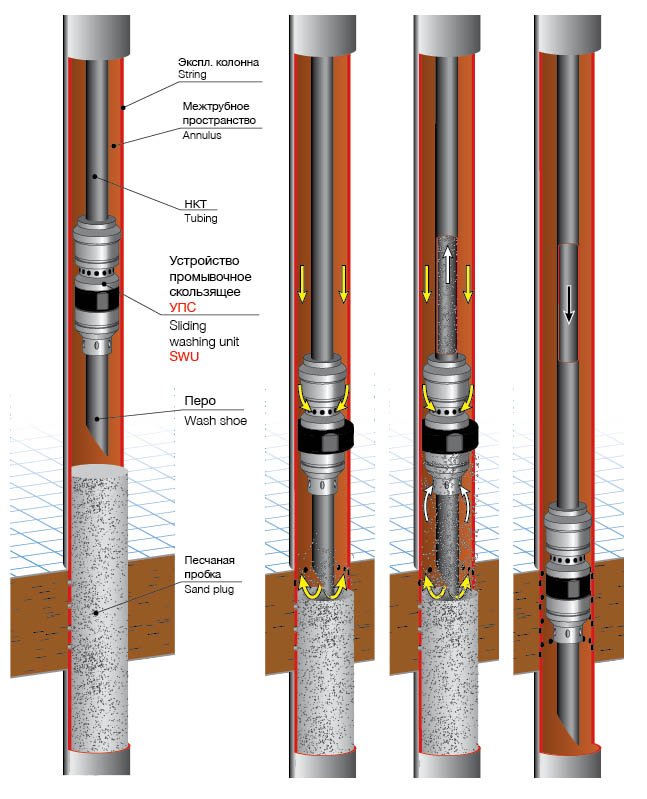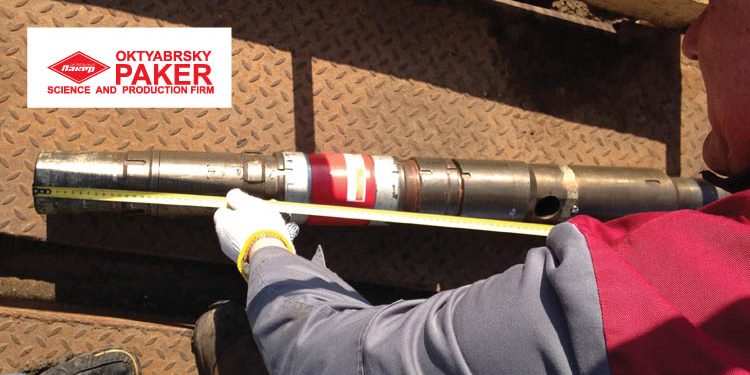The ROGTEC Interview: Artem Zmeu, Head of Central Engineering and Technological Service, NPF Paker
What are the major differences between permanent and retrievable packers?
There are many different types of packer equipment. The choice of packer for the required performance characteristics is based on the application.
The packers differ by their installation type: hydraulic, mechanical, electrical, or explosive. The mechanical installation type is classified into axial set and rotation set. They differ further by their load holding direction: top down, bottom up, or bidirectional. Packers can be installed in the wellbore either independently (no attachment to the tubing) or attached to the tubing. Packers can be retrievable (reusable, serviceable and capable of further use) or non-retrievable (disposable, to be destructed/milled out following their use). They also vary by service: short service activities, well operations of production wells, or reservoir pressure systems.
Permanent packers are the packers installed in the casing and not supporting retrieval, that is, the packers for production or service activities, independent, non-retrievable, resistant to motion in either direction. If necessary, they are milled out.
Such packers comprise various bridge plugs used during service activities and set hydraulically on the string or the wireline by using geophysical equipment. The best type of the permanent packers are the PRZ bridge plugs that can be simultaneously used as cement plugs to inject cement during remedial cementing to be later milled with a conventional three cone bit. Or the packers for gas or oil production or water injection where the string is disconnected from the packer at the end of its extended lifetime and then the packer is milled up (P-YaDZh-GR).
The distinctive feature of the retrievable packers is their repeated use, serviceability and capability of further use. Such packers are mechanically or hydraulically installed in the casing and can be removed from the well if necessary. It is the most popular packer type. The service activities employ re-usable, mechanical, axially set packers that hold differential pressure acting upwardly (PRO-YaMO-YaG). The reservoir pressure systems use mechanical, axially set packers that are capable of holding pressure bi-directionally (PRO-YaDZh-O). The most popular packers for oil production are reusable, independent, mechanical, axially set, holding differential pressure acting bidirectionally (PRO-YaT-O).
To improve packer reliability and safety and removal ease special expandable supports are used above and below the rubber elements to keep the rubber from entering between the packer and the casing. The only company in Russia that has this design is SPF Packer.
Please name the factors that should be considered by an operator when choosing between a permanent packer and a retrievable packer.
It is necessary to identify in what kind of activities the packer will be used, what issues it is supposed to address. What loads, differential pressure, directions differential pressure is acting in, and temperature condition the packer has to withstand. It applies to any packer type.
Different types of packers/technologies are developed and used for different applications.
The mechanical PRO-YaMO-YaG packers are used for service operations to pressure test the string, identify leaks, perform acid and other treatments. The PRO-YaMO-YaG(F) packers with a special screen to protect the hydraulic anchor are used for HF.
During cement squeezing and pumping down slurry either permanent, non-retrievable packers: the cement plugs or the PRZ type bridge plugs, or retrievable PRO-YaMO-YaG service packers, cement plugs or the PRZ type bridge plugs can be used.
The packers most often used for service activities, hydraulic fracturing, or string pressure testing are retrievable packers.


Please list the advantages of your company’s manufactured packers (other than the wellbore isolation).
For one thing, it is the high quality of the packer equipment and experience accumulated during 25 years of the company’s successful operation. It is the high quality of engineering, high quality of manufacturing, and attitude towards our business companions and trade.
SPF Packer offers an integrated solution to the Customer’s needs and a prompt response to its requirements and suggestions. The company both installs the new equipment and trains the Customer’s employees. It further arranges hands-on workshops either on site or in the SPF Packer office. The high quality and safety of the packer related services are a top priority in the company’s policy.
And our main goal is the Customer’s success.
Please name the major borehole conditions that underpin the selection of packers.
- Service
- Production string size, wall thickness
- Predicted differential pressure at the packer
- Fluid temperature
- Packer setting depth
- Fluid properties, amount of corrosive substances

Please list the major packer types commonly used in Russia.
Most of the time, Russian companies use retrievable, mechanically acting, axially set packers. They are simpler and take less preparation than permanent milled-out packers, retrievable or permanent hydraulically acting packers.
The end users prefer reliable equipment that is easy to operate and repair. The parts of our packers are standardized and can be used when servicing their different sizes. The assembly and disassembly procedure is clear from the operation manual. We further provide regular training on equipment repair, application-based selection, supervision, and problem prevention.
What is the share of enhanced packers used in Russia?
Innovation forges ahead. Oil and gas production technology and reservoir pressure systems evolve and change all the time. And we develop new packer types/series and continuously improve and enhance our products.
Our chief criterion for packer success is to mutually advance the production technology and reduce well workover cost while boosting efficiency.
How can the operator ensure the precise placing and setting of the packer?
Precise positioning is possible with a high-quality service. The most important resource is our employees. They have considerable experience in preparing and conducting of these works.
The very best equipment and costly activities may go wrong as a result of bad workmanship of those who directly perform the work at the wellhead.
Tool-wise, the packer is positioned in the well through well log ties (GR, CCL). Good craftsmanship at the wellhead and a careful adjustment is needed.
At the same time, the packer setting location can be identified from the available well logging data with the help of dedicated software to calculate the location in order to achieve a good seal and the load required to set the packer at the necessary depth.
To achieve excellence in their workmanship our employees undergo periodic training in use, repair, and calibration of equipment, and various calculations.

Please detail the key causes of packer failure during installation and lifetime for Russia.
There are three categories of causes that impact the packer operation during its setting, use, and removal:
- Lack of information about the actual string condition (no repair records, string or behind the casing flow survey)
- Poor string preparation lack of, or poor preparation of the packer setting location by gaging and scraping or replacing scraping with reaming
- Exceeding packer loading at changes in well production conditions. When production has to be increased during operation, it brings about a corresponding increase in pressure/loads applied to the packer in excess of the design values.
For this reason, SPF PACKER always works closely with the Customer and trains its employees. We keep abreast of the Customer’s issues early on and jointly develop new approaches.

